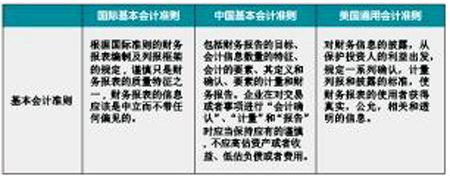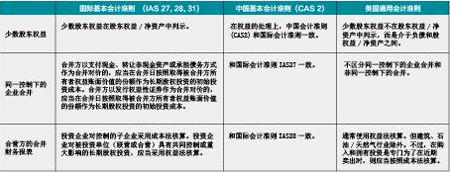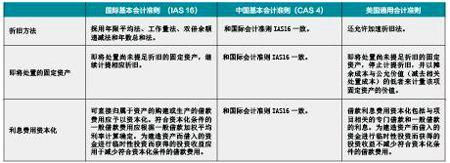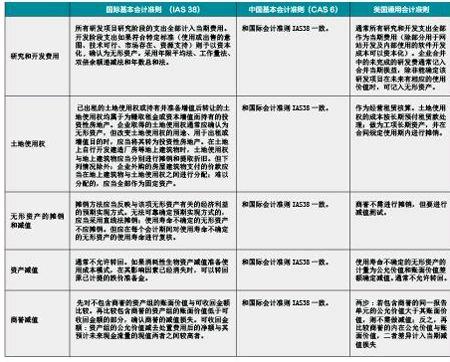民营企业境外上巿的美学
张凯杰+罗干淇

会计财务是企业境外上市最为重要的部分,我们会一连两期讨论中国会计准则与国际会计准则及美国通用会计准则的差异及趋同。
张凯杰
香港资深执业会计师,香港税务师,现为安华信会计师事务所合伙人。
香港中文大学法学硕士、香港城市大学国际会计学硕士、电算机硕士。
拥有20年财务审计、财务会计及国际资本市场经验,曾于全球四大会计师事务所及国际会计师事务所任职审计及曾任几家美国上市公司的首席财务总监。
罗干淇

毕业于香港大学法律系,香港特别行政区高等法院律师。有十五年国际资本市场经验,曾协助超过十家民营企业成功在境外上市及融资,并曾担任境外上市公司董事、董秘、法务总监、上市组组长及境外基金副总裁等职。(如对以上文章有任何交流意见,欢迎发邮件至luoganqi@cei.gov.cn)
背景
由于全球一体化促成经济全球化,国家催生出越来越多的跨国公司, 而企业的发展及融资的需要, 又催生出大量的企业在不同的资本市场上市。会计作为一种世界性的国际语言,是国际市场与国内市场之间的特殊桥梁。自我国于2007年元月元日开始在国内上市公司范围内执行一项基本会计准则和38项具体会计准则,中国会计准则(China Accounting Standards)和国际会计准则(International Accounting Standards)走向趋同,也就是说中国会计准则和国际会计准则在格式,概念,述语等各方面都基本一致,然而国际会计准则的制定与变革主要是借鉴美国通用会计准则(US Generally Accepted Accounting Principles),本文旨在细谈中国会计准则与国际会计准则及美国通用会计准则差异及趋同。(风骨系列介绍请参阅《财经界》杂志2014年10月刊:民营企业境外上市的美学 - 风骨系列(一)介绍篇及往后杂志的相关文章)
基本会计准则
“基本会计准则乃概念框架的概念框架,是所有具体准则的准则”






The Formation of the Asian Infrastructure Investment Bank,
a Milestone for China
Author / Jeffrey Friedland
In October 2014, Chinas government formally established the Asian Infrastructure Investment Bank. Its stated purpose was to provide infrastructure financing for Asia. The Bank was immediately seen by many as a rival global financial institution to the World Bank and the Asian Development Bank, and its formation was immediately attacked by the U.S. government.
Compared to the Asian Development Bank, with a capital base consisting of funds paid in and pledged of $160 billion and the World Banks capital base of $223 billion, the Asian Infrastructure Investment Bank will start with $50 billion of capital contributed by China. The Asian Infrastructure Development Bank has a goal of achieving $100 billion.
The key difference to the World Bank and the Asian Development Bank is the word “infrastructure” in the name of the Asian Infrastructure Investment Bank. This focus on infrastructure is key.
Reacting to the social and political objectives of advanced economies, including most notably the United States and western European countries, loans from both the World Bank and the Asian Development Bank not only provide funding for infrastructure but also social policy objectives including environmental protection and gender equity. In contrast, the Asian Infrastructure Investment Bank will focus solely on infrastructure development.
Infrastructure is critical for Asia and the continents economic and social development. Estimates indicate that $8.22 trillion in infrastructure investment is needed for Asia over the ten-year period from 2010 to 2020. Its easy to compare this huge infrastructure requirement to the minimal infrastructure investments made by both the World Bank and the Asian Development Bank. For the financial year 2014, the World Bank spent $24.2 billion globally on infrastructure and the Asian Development Banks total expenditures, which included infrastructure, totaled $211 billion.
The need for massive infrastructure development is clear when population and per capita gross domestic product are analyzed. More than 700 million people in Asia live below the poverty line. Of these, more than half live in South Asia. Some of the worlds least-developed countries, those most in need of massive infrastructure development, include Myanmar, Cambodia and Laos. For comparative purposes, the most recent data indicates that per-capita GDP approximates $1200 for Myanmar, $1000 for Cambodia and $1600 for Laos, compared to approximately $7000 for China and $39,000 for Japan.
Throughout Asia, infrastructure development is a necessity to provide and support economic growth, improve the environment and increase telecommunications and internet connectivity within the region and globally.
Key to Beijings decision to form the Asian Infrastructure Investment Bank was its conclusion that existing global financial institutions, most notably the World Bank and the Asian Business Development Bank, lacked the focus, desire or the resources to meet Asias infrastructure needs. Stated Bank infrastructure development objectives were identified as the construction of railways, airports, and telecommunications projects throughout the region.
China was also motivated to establish the Asian Infrastructure Investment Bank due to the lack of reforms at the International Monetary Fund, the World Bank and the Asian Development Bank to reflect an increased role of developing countries in the global economy. Based both on population and economic output, developing countries are underrepresented at all three institutions.
Governance of these global financial institutions is also a continuing issue for developing countries. The Asian Development Bank continues to be dominated by Japan and the United States, with each country having twice as many votes as China. This governance is a lack of acknowledgment of China having the largest economy in Asia and the worlds second largest economy.
While Chinas economy is approximately the same size as that of the United States, it has less than one-third the number of World Bank votes than the U.S. Chinas voting power at the World Bank is only slightly more than that of France, which has an economy one-sixth its size.
The BRIC countries of Brazil, Russia, India, China and South Africa collectively comprise 21 percent of the worlds economy, and 43 percent of the worlds population, but their votes at the International Monetary Fund, the World Bank and the Asian Development Bank are miniscule relative to the size of their economies and populations. Together they hold 11 percent of the voting shares at the International Monetary Fund and 14 percent of the International Bank for Reconstruction and Development.
Five years ago there was an attempt to adjust minimally the voting at the International Monetary Fund, the sister institution to the World Bank. That effort failed, to a large extent due to the dysfunctional relationship between Americas President Obama and its Congress. The lack of progress in reforming the International Monetary Funds governance solidified Beijings resolve to change international finance by taking proactive steps to establish a new Asian economic order, with the establishment of the Asian Infrastructure Investment Bank as an early step.
The establishment of the Asian Investment Development Bank was a triumph for Beijing. Publicly and behind the scenes, America aggressively lobbied its allies to not participate. When the bank was inaugurated, the American allies, South Korea, Indonesia and Australia were conspicuously absent. While the U.S. indicate concerns regarding the Banks environmental impact, governance, labor and purchasing standards, the real reason was blatantly clear. The U.S. saw Chinas role in establishing the Asian Infrastructure Investment Bank as a threat to the continuing dominance of global financial institutions by the U.S. and its allies.
For Asias developing countries, the strong U.S. opposition to the establishment of the Bank reflected a cold-war way of thinking that wasnt responsive to their development objectives and their aspirations for their countries future.
As of mid-April 2015 the Asian Infrastructure Investment Bank had 57 countries as charter members, including Americas staunch allies, the United Kingdom, Germany, Australia and South Korea. Fourteen of the Group of 20 industrialized nations are now members. China, based on its gross domestic product, is the largest shareholder of the Asian Infrastructure Investment Bank, but as new countries join, its percentage ownership will decrease.
The establishment of the Asian Infrastrastructure Development Bank was a diplomatic success for China and a foreign policy and diplomatic failure for the United States. To a large extent, the United States only has itself to blame for the Banks establishment.
The establishment of the Asian Infrastructure Development Bank by China is an event that is shaking up the post-World War II, American led, global financial order. It should be seen by the United States as a real warning shot, is indicative of the decline of U.S. global power and the disarray of U.S. foreign policy. In the end, the U.S. failure to persuade its closest allies not to join the Asian Infrastructure Investment Bank, speaks for itself.
Its logical to assume that China will rightly use the Asian Infrastructure Investment Bank to extend its influence in Asia, at the expense of the United States and Japan. If this occurs, it will be similar to how advanced economies used the World Bank and the Asian Development Bank to advance their own agendas over the past decades.
The establishment of the Asian Infrastructure Investment Bank is a platform for China to challenge Western-backed global financial institutions. The Bank should have a significant impact on Asias developing countries and will enhance Chinas role and stature in the region.
The Asia Infrastructure Investment Bank will bring billions of dollars of new investments to Asia and as importantly will provide a greater voice to developing countries in their development future than their current limited role at the World Bank and the Asian Development Bank.
The Bank will also provide China with an option for some of its large foreign exchange reserves of almost $4 trillion, specifically the repatriation of some of these funds from Euros, dollars and Swiss Francs to development within its Asian sphere of influence.
My hope for China and all of Asia is that the establishment of the Asian Infrastructure Development Bank will jolt other global multilateral financial institutions to be more inclusive, and usher in a new era of global cooperation between mature and developing countries, which will benefit the entire planet.
财经界2015年5期
